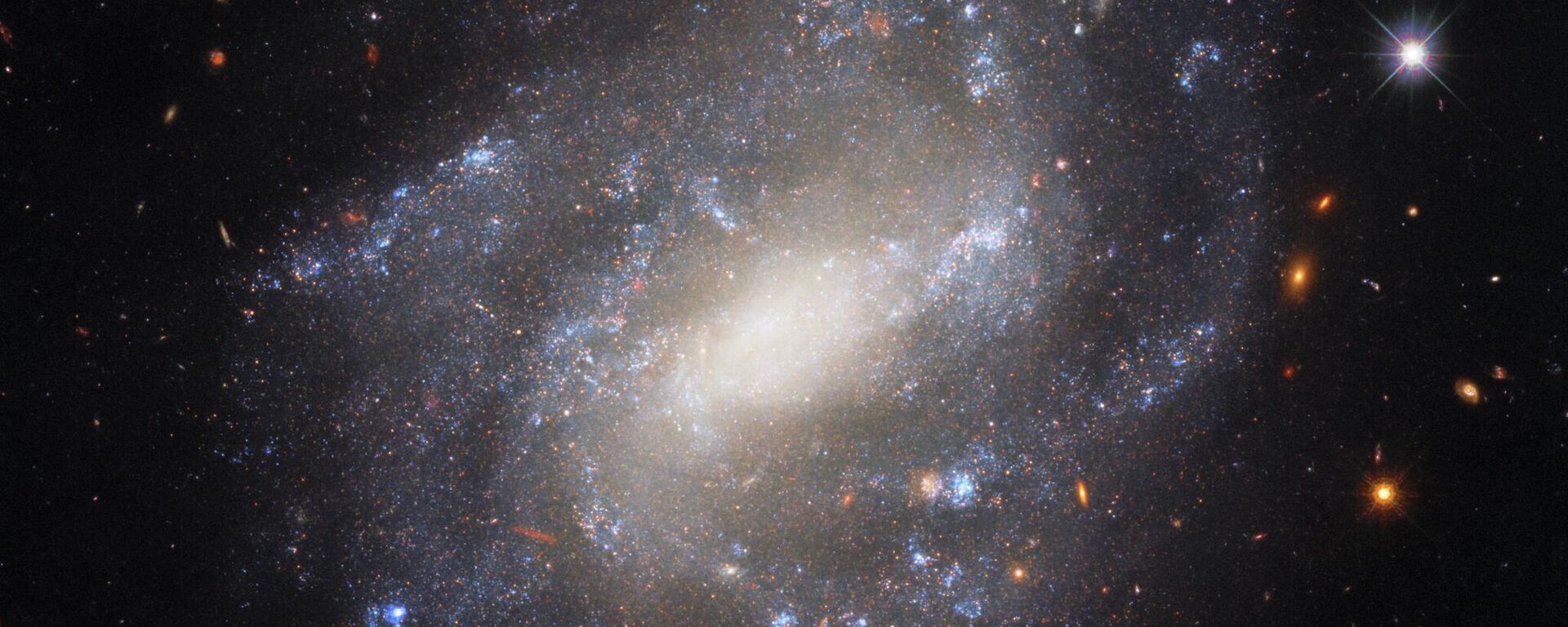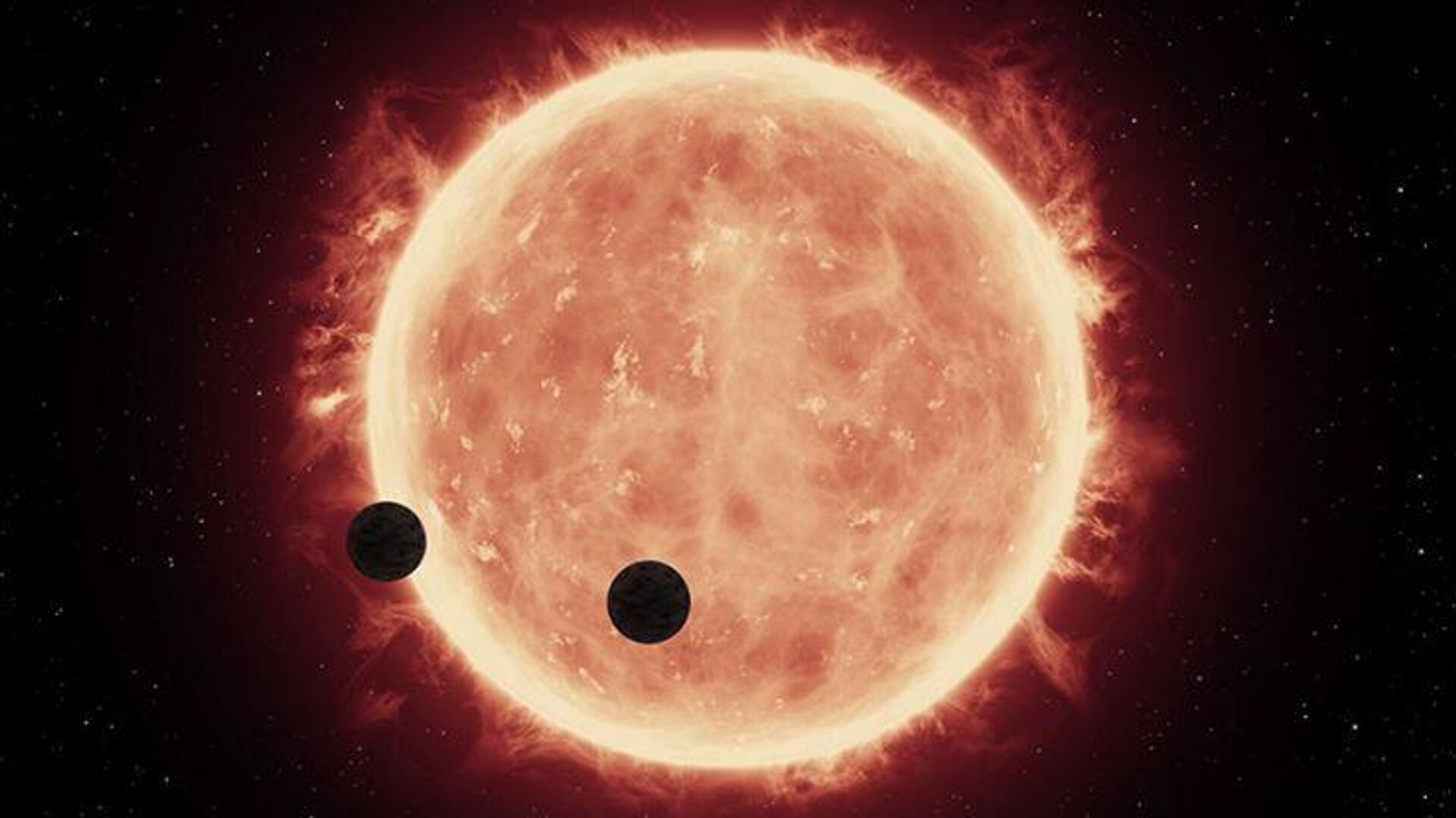https://sputnikglobe.com/20221219/astronomers-find-two-potentially-habitable-exoplanets-1105581194.html
Astronomers Find Two Potentially Habitable Exoplanets
Astronomers Find Two Potentially Habitable Exoplanets
Sputnik International
Since the beginning of space exploration, humanity has wondered whether there is life beyond Earth or if there are any other planets suitable for life... 19.12.2022, Sputnik International
2022-12-19T13:35+0000
2022-12-19T13:35+0000
2022-12-19T13:35+0000
science & tech
cosmos
exoplanets
extraterrestial life
habitable planets
https://cdn1.img.sputnikglobe.com/img/07e6/09/09/1100595207_144:0:882:415_1920x0_80_0_0_74aabcebc348ef80156ce7804017ff6e.jpg
An international team of astronomers from the Instituto de Astrofísica de Canarias, led by Alejandro Suárez Mascareño, has discovered two exoplanets near our solar system that lie within the habitable zone of their star.The planets were given the names GJ 1002 b and GJ 1002 c. They orbit the red dwarf GJ 1002, which is less than 16 light years away from our Solar System. These planets have the same mass as Earth and orbit within the habitable zone of their star, meaning that the surface conditions on these planets are close to Earth-like and favorable for the emergence of Earth-like life.The researchers explained that GJ 1002 is a red dwarf, with its mass amounting to only one-eighth of that of the Sun. Both planets are closer to it than Earth is to the Sun. But because the star's radiation is not as strong as the Sun's, the planets' surface shouldn't be too hot. GJ 1002 b takes about 10 days to make a complete revolution around the star, while GJ 1002 c takes 21 days.The system's proximity will make it possible to determine the presence and composition of the planets' atmospheres very accurately. The scientists intend to analyze their reflected light or thermal radiation.The astronomers stressed that the planets appear to be promising regarding future missions aimed at finding life outside our Solar System.Recently, researchers at the University of Montreal found two possible "water world" exoplanets - Kepler-138c and Kepler-138d. Those planets may consist largely of H2O. If the theory is confirmed, it would be a major breakthrough in the study of space.
https://sputnikglobe.com/20221218/two-deep-space-super-earths-might-be-mostly-water--1105564407.html
Sputnik International
feedback@sputniknews.com
+74956456601
MIA „Rossiya Segodnya“
2022
News
en_EN
Sputnik International
feedback@sputniknews.com
+74956456601
MIA „Rossiya Segodnya“
Sputnik International
feedback@sputniknews.com
+74956456601
MIA „Rossiya Segodnya“
habitable planets were found, life outside the earth, habitable planets in the deep space, gj 1002 habitable planets
habitable planets were found, life outside the earth, habitable planets in the deep space, gj 1002 habitable planets
Astronomers Find Two Potentially Habitable Exoplanets
Since the beginning of space exploration, humanity has wondered whether there is life beyond Earth or if there are any other planets suitable for life. Recently, a couple of more planets have been found that may answer that question.
An international team of astronomers from the Instituto de Astrofísica de Canarias, led by Alejandro Suárez Mascareño, has
discovered two exoplanets near our solar system that lie within the habitable zone of their star.
“Nature seems bent on showing us that Earth-like planets are very common. With these two we now know 7 in planetary systems quite near to the Sun,” explains Alejandro Mascareño.
The planets were given the names GJ 1002 b and GJ 1002 c. They orbit the red dwarf GJ 1002, which is less than 16 light years away from our Solar System. These planets have the same mass as Earth and orbit within the habitable zone of their star, meaning that the surface conditions on these planets are close to Earth-like and favorable for the emergence of Earth-like life.
The researchers explained that GJ 1002 is a red dwarf, with its mass amounting to only one-eighth of that of the Sun. Both planets are closer to it than Earth is to the Sun. But because the star's radiation is not as strong as the Sun's, the planets' surface shouldn't be too hot. GJ 1002 b takes about 10 days to make a complete revolution around the star, while GJ 1002 c takes 21 days.
The system's proximity will make it possible to determine the presence and composition of the planets' atmospheres very accurately. The scientists intend to analyze their reflected light or thermal radiation.
"The future ANDES spectrograph for the ELT telescope at ESO, in which the IAC is participating, could study the presence of oxygen in the atmosphere of GJ 1002 c," says astrophysicist Jonay I. González Hernández of the IAC.
The astronomers stressed that the planets appear to be promising regarding future missions aimed at finding life outside our Solar System.
Recently, researchers at the University of Montreal found two possible "water world" exoplanets - Kepler-138c and Kepler-138d. Those planets may consist largely of H2O. If the theory is confirmed, it would be a major breakthrough in the study of space.

18 December 2022, 11:21 GMT


